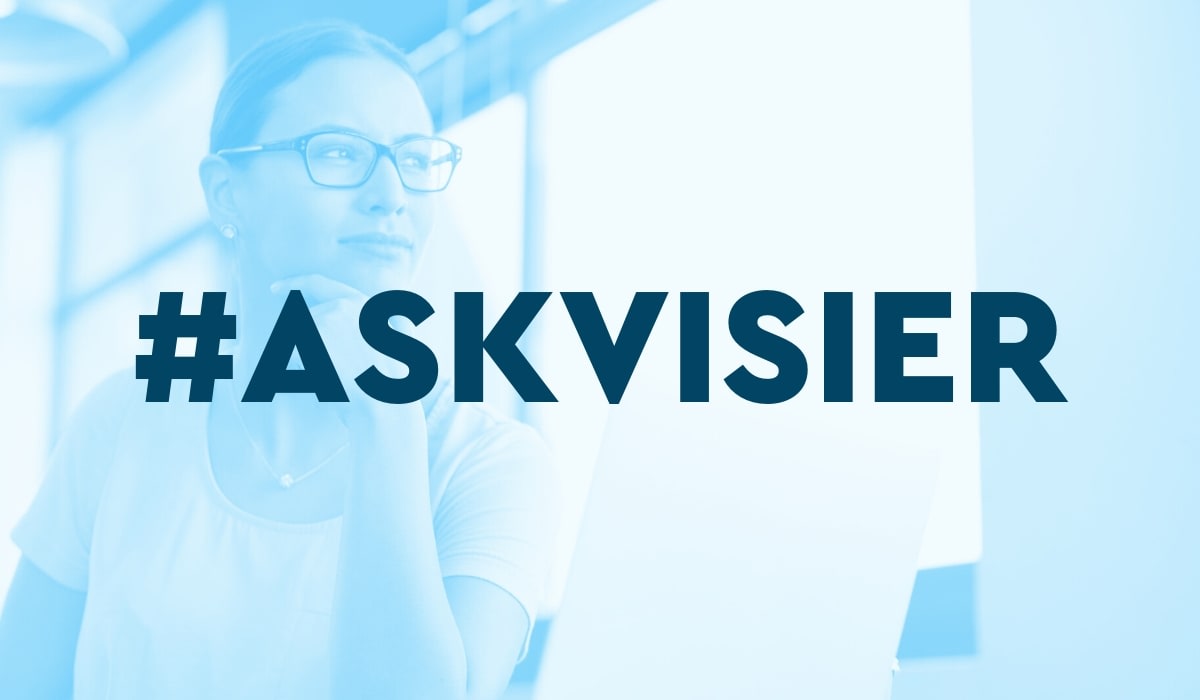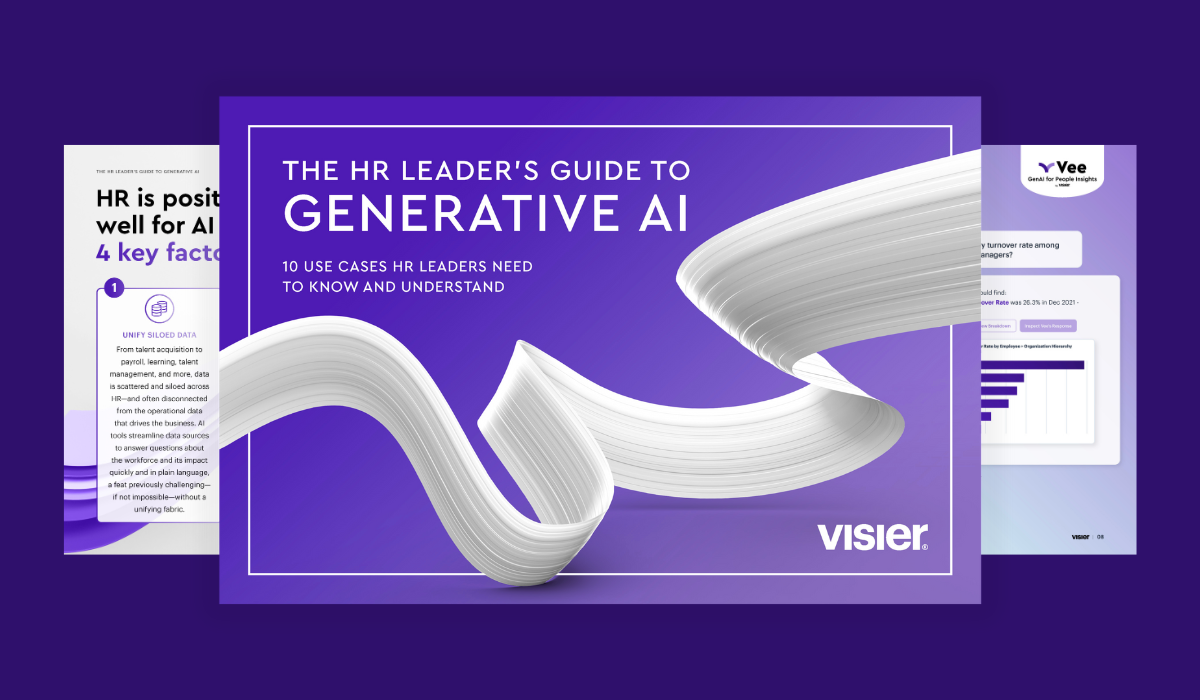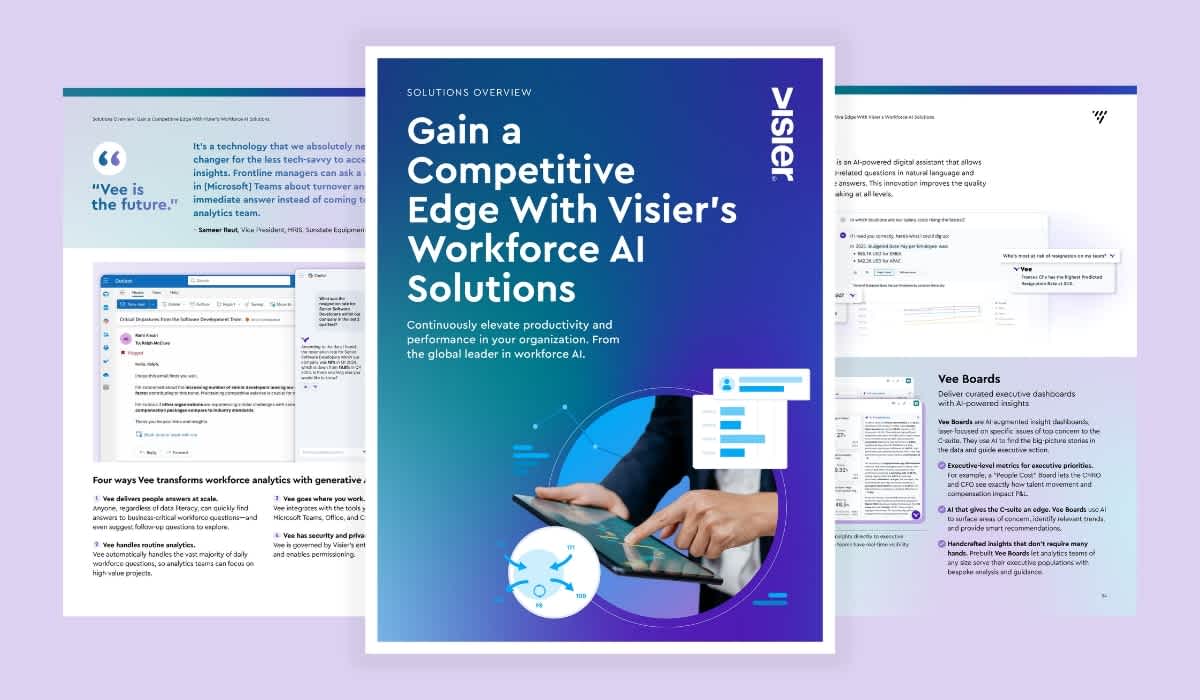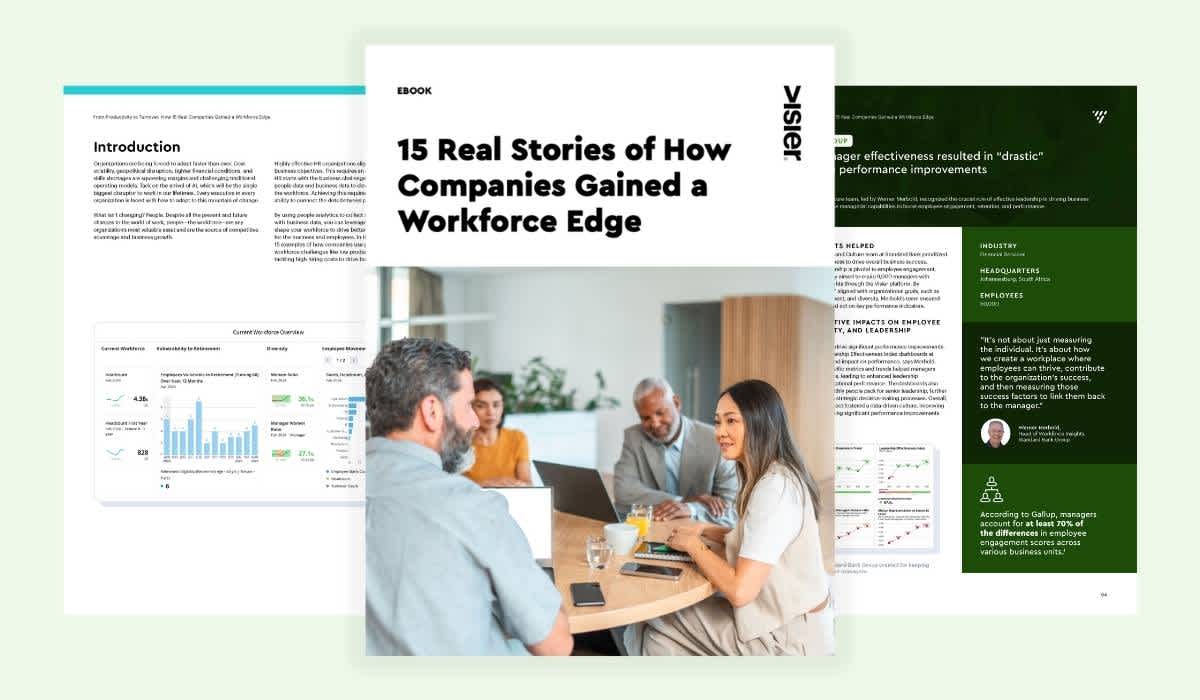Perspectives on Workforce Analytics: The AI Edge for the HR Business Partner
Discover how AI and advanced analytics can elevate the HRBP role. Learn actionable steps HRBPs can take to become strategic business advisors in the AI era. Read more.

My life's work has been shaped by failure—not just my own, but also by learning from those around me. Early in my career, I believed that creating value for customers, associates, and shareholders was simply about reducing roadblocks.
I spent much of my time navigating my business constituents through approvals, exceptions, and employment law risks. These were skills I knew well, and coordinating ambiguous processes to achieve faster output for my business colleagues felt critical.
While I excelled at removing barriers, I was using that work as an excuse to avoid developing essential skills such as people analytics, business knowledge, and balance-sheet understanding.
That gap became glaringly apparent when, during a layoff conversation, an employee asked me a question I wasn’t prepared for:
"What did you do to prevent this?"
In that moment, I was exposed. My certifications, post-graduate degree, and years of HR experience hadn’t prepared me for that question. It was a stark realization that I had been prioritizing the wrong skills for the role I wanted to play.

Adapt to AI, learn the business, and lead from the front
HR Business Partners (HRBPs) have always been vital connectors between talent and organizational goals. But the world is changing fast. Even if AI development were to halt, there would still be limitless opportunities to evolve the HRBP role and expand its impact.
From understanding financial data to driving critical retention strategies, HRBPs have an unprecedented opportunity to lead.
Learning the business: AI and publicly available data
HRBPs who truly understand their organization’s financial and operational context are indispensable. AI can help decode publicly available data, such as quarterly earnings reports, annual statements, or ESG disclosures, into actionable insights. Here's how:
1. Analyze quarterly and annual earnings reports
Public earnings calls and filings offer a wealth of information about company performance. AI-powered tools can parse these documents, highlighting key metrics like revenue growth, profit margins, or operational cost pressures.
Application: An HRBP can use this data to understand where the company is investing or cutting back, aligning retention strategies with areas critical to growth.
2. Leverage ESG reports for talent alignment
An HRBP who understands the balance sheet and links it to talent strategies speaks the language of executives—a critical skill in today’s data-driven world.
ESG disclosures provide insight into company values and long-term goals, often tied to talent needs. AI tools can summarize these reports and suggest ways HRBPs can connect initiatives like DEI or sustainability efforts with workforce planning.
Application: If a company emphasizes diversity as part of its ESG strategy, HRBPs can focus on retaining and developing diverse leadership pipelines to meet those goals.
3. Connecting retention to business outcomes
Retention strategies are no longer just about engagement—they’re about driving measurable business results. AI enables HRBPs to take a strategic approach by connecting key talent initiatives to outcomes like workforce productivity, innovation, and financial performance.
4. Identifying key talent and their impact
AI can map employee roles to business metrics, showing the direct impact of retaining critical talent.
Application: HRBPs should combine internal workforce data with external benchmarks to create a retention priority list. This list should tie talent retention efforts to the company’s financial and operational objectives.
5. Predicting retention ROI
Use AI to calculate the cost of turnover in critical roles. Tools can model not only the financial impact but also the time needed to onboard and ramp up replacements. These insights make the business case for targeted retention efforts.
Application: Partner with finance to present a clear retention ROI story, showing executives how talent strategies align with and support business outcomes.
Why HRBPs must act now
The business landscape is evolving. Baby Boomers are retiring, birth rates are declining, and talent markets are more competitive than ever. HRBPs cannot afford to operate with outdated tools or limited perspectives. The stakes are clear:
Learn the business from a financial perspective
Connect talent strategies to measurable outcomes
Transform HRBPs from operational to strategic leaders

4 actionable steps for HRBPs to take in the AI era
Master public data: Use AI tools to analyze earnings reports, ESG disclosures, and other financial data to understand your company’s priorities.
Leverage workforce analytics: Adopt platforms like Visier to uncover workforce trends and align strategies with organizational goals.
Align talent to strategy: Focus retention efforts on roles and individuals critical to the company’s growth and innovation goals.
Collaborate across functions: Partner with finance, operations, and IT to integrate talent strategies into the broader business framework.
Final thought: HRBPs as strategic leaders
AI is not a threat to HR—it’s the partner that can transform HRBPs into strategic advisors. By leveraging AI to understand the business, utilizing tools like Visier for workforce analytics, and connecting talent strategies to outcomes, HRBPs can elevate their role and impact.
The opportunity is clear, and the tools are available. The only question is: Will HRBPs rise to meet this moment?



